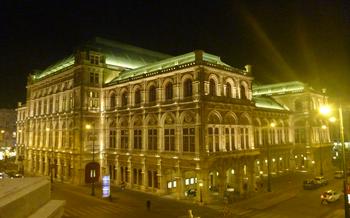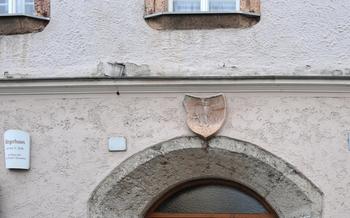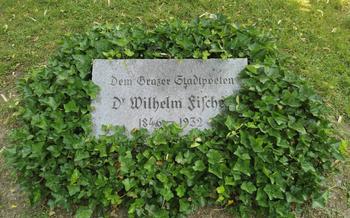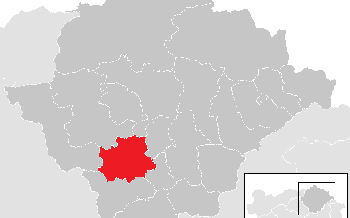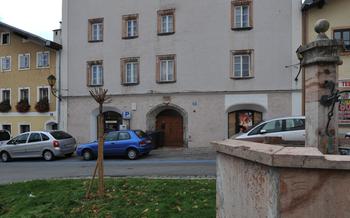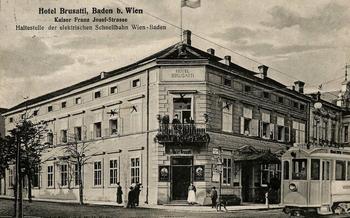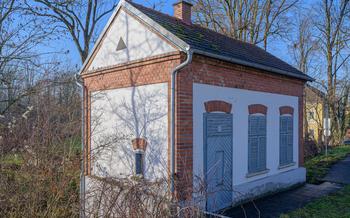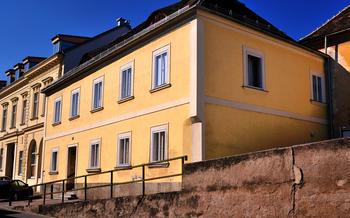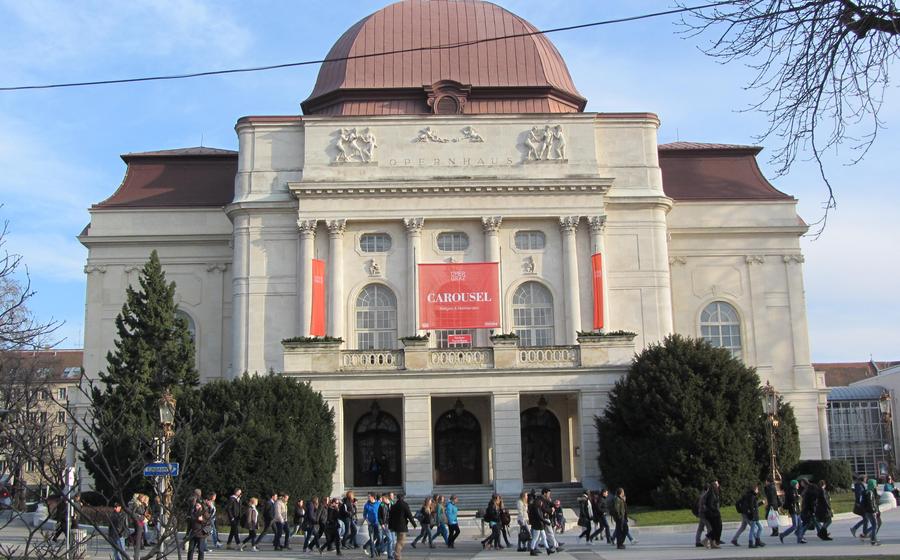
Graz Opera House
- Graz Opera House: A Masterpiece of Architecture
- Attending a Performance: A Cultural Experience
- The Grand Foyer: A Place of Elegance
- The Auditorium: A Symphony of Sound
- The Repertoire: A Diverse Range of Performances
- The Artists: World-Class Talent
- History and Heritage: A Journey Through Time
- Accessibility and Transportation: Getting There
- Dining and Refreshments: A Culinary Delight
- Dress Code and Etiquette: A Touch of Refinement
- Behind-the-Scenes Tours: A Peek into the Magic
- Education and Outreach Programs: Engaging with the Arts
- Accommodation and Hotels: A Place to Rest
- Insider Tip: Experience the Opera House Beyond Performances
Graz Opera House: A Masterpiece of Architecture
Graz Opera House, also known as Opernhaus Graz, stands as a testament to the city's rich cultural heritage and architectural prowess. Its striking design and grandeur have earned it a reputation as one of the most significant opera houses in Austria and beyond.
The opera house's architectural style is a blend of Neo-Baroque and Art Nouveau elements, creating a unique and visually captivating edifice. Its grand façade boasts intricate carvings, elegant curves, and a majestic dome that dominates the city skyline. The interior is no less impressive, with a lavishly decorated auditorium, opulent chandeliers, and a grand foyer that exudes an air of sophistication.
The history of Graz Opera House is as fascinating as its architecture. It was constructed between 1897 and 1900 under the direction of the renowned Viennese architect Ferdinand Fellner and Hermann Helmer, who were responsible for designing over 40 opera houses across Europe. The opera house was inaugurated in 1899 with a performance of Mozart's "The Magic Flute," marking the beginning of a rich tradition of musical excellence.
The Graz Opera House is renowned for its unique features and design elements that set it apart from other opera houses. The auditorium's horseshoe shape provides exceptional acoustics, ensuring that every seat offers an immersive and unparalleled sound experience. The stage is equipped with state-of-the-art technology, allowing for elaborate and visually stunning productions. The grand foyer, with its sweeping staircases, ornate chandeliers, and elegant marble floors, serves as a grand entrance and a gathering place for patrons to socialize and mingle before and after performances.
The Graz Opera House has received numerous awards and accolades for its architectural and cultural significance. It was designated as a UNESCO World Heritage Site in 2010, recognizing its outstanding universal value and its contribution to the world's cultural heritage. The opera house has also been recognized by the Austrian government as a National Historic Monument, further solidifying its status as a treasured cultural asset.
Attending a Performance: A Cultural Experience
Attending a performance at the Graz Opera House is a cultural experience like no other. The opera house offers a diverse repertoire of opera and ballet performances throughout the year, showcasing the talents of renowned artists from around the world.
When choosing a show, consider your personal preferences and interests. The opera house presents a variety of productions, from classic operas like "La Bohème" and "Carmen" to contemporary works and experimental pieces. Booking tickets in advance is recommended, especially for popular performances.
Dress code for attending a performance at the Graz Opera House is typically formal. Men are expected to wear a suit or tuxedo, while women can opt for an evening gown or cocktail dress. Dress code may vary slightly depending on the occasion or the seating category. Appropriate attire shows respect for the performers and the formality of the occasion.
Before the show, consider dining at one of the many restaurants near the opera house. There are various options to choose from, ranging from traditional Austrian cuisine to international fare. Enjoying a pre-show meal can enhance the overall experience and create a memorable evening.
The Grand Foyer: A Place of Elegance
The grand foyer of the Graz Opera House is a masterpiece of architecture and design, reflecting the grandeur and opulence of the late 19th century. As you step inside, you are greeted by a sweeping staircase that leads to the upper levels of the theater. The walls are adorned with intricate frescoes and paintings, depicting scenes from mythology and history. The ceiling is a work of art in itself, featuring a stunning fresco that depicts the Muses, goddesses of the arts.
The grand foyer is not just a place to admire the architecture, but also a place to socialize and mingle. During intermissions, the foyer comes alive with the buzz of conversation and laughter as patrons gather to discuss the performance and share their thoughts on the evening's entertainment.
The grand foyer has also played host to numerous historical events and celebrations. In the past, it has been used for balls, receptions, and other social gatherings. Today, it continues to be a popular venue for special events, such as charity galas and award ceremonies.
If you are visiting the Graz Opera House, be sure to take some time to explore the grand foyer. It is a beautiful and historic space that is sure to leave a lasting impression.
Photography Guidelines
Photography is generally not permitted in the grand foyer, as it can be disruptive to performances. However, there are certain times when photography is allowed, such as during guided tours or open days. If you are unsure about the photography policy, please ask a member of the opera house staff.
The Auditorium: A Symphony of Sound
The Graz Opera House's auditorium is a masterpiece of acoustic design and visual splendor. Step inside, and you'll be captivated by the horseshoe-shaped seating arrangement, which offers excellent sightlines from every seat. The auditorium's capacity of over 1,000 seats ensures an intimate atmosphere, allowing you to fully immerse yourself in the performance.
The acoustics of the auditorium are simply superb. The combination of the room's shape, materials, and advanced soundproofing ensures that every note, every word, and every rustle of a costume is crystal clear. Whether you're listening to a soaring aria or a delicate ballet score, you'll feel as though you're right on stage with the performers.
The stage itself is a work of art, featuring state-of-the-art technology and versatile design. It can accommodate elaborate sets, intricate lighting, and special effects, allowing for visually stunning and immersive productions. The orchestra pit, located in front of the stage, seamlessly blends with the acoustics of the auditorium, creating a harmonious musical experience.
Accessibility is a top priority at the Graz Opera House. Wheelchair-accessible seating is available throughout the auditorium, ensuring that everyone can enjoy the performances. Additionally, assistive listening devices are provided for those with hearing impairments, allowing them to fully participate in the operatic experience.
The Repertoire: A Diverse Range of Performances
The Graz Opera House presents a diverse repertoire of operas, ballets, and other musical performances that cater to a wide range of tastes and preferences. The opera season typically runs from September to June, with performances taking place on various evenings and weekends. The ballet season, on the other hand, usually runs from November to April, offering a variety of classical and contemporary ballets.
Some of the highlight performances and must-see productions at the Graz Opera House include classic operas like Mozart's "The Marriage of Figaro" and Verdi's "La Traviata," as well as contemporary operas by renowned composers such as Philip Glass and John Adams. The ballet repertoire features both traditional ballets like "Swan Lake" and "The Nutcracker" alongside innovative and modern works by choreographers from around the world.
The opera house also hosts special events and gala performances throughout the year, featuring renowned guest artists and showcasing the talents of the resident opera and ballet companies. These special events often include unique collaborations, themed performances, and world premieres, offering opera and ballet enthusiasts a chance to experience something truly exceptional.
When selecting performances to attend, it is recommended to consider personal preferences and interests. The opera house's website provides detailed information about each production, including synopses, cast and crew lists, and performance dates and times. It is also advisable to book tickets in advance, especially for popular performances and special events, to secure the best seats and avoid disappointment.
The Artists: World-Class Talent
Graz Opera House is renowned for its world-class artists, featuring a roster of talented opera singers, conductors, and ballet dancers. These performers come from both local and international backgrounds, bringing a diverse range of expertise and artistry to the stage. The opera house's commitment to excellence attracts renowned singers such as Anna Netrebko, Jonas Kaufmann, and Bryn Terfel, as well as acclaimed conductors like Franz Welser-Möst, Christian Thielemann, and Riccardo Muti.
The ballet company at Graz Opera House is equally impressive, showcasing the talents of principal dancers such as Olga Smirnova, Friedemann Vogel, and Marian Walter. These dancers have performed on some of the world's most prestigious stages and are celebrated for their technical prowess, grace, and expressiveness.
Attending a performance at Graz Opera House is an opportunity to witness these world-renowned artists in action. The passion, dedication, and skill they bring to their performances create an unforgettable experience for audiences.
After the show, there are often opportunities to meet the artists in person. These interactions provide a unique chance to learn more about their craft, their inspirations, and their experiences in the world of opera and ballet. For aspiring performers, these encounters can be particularly inspiring and motivating.
History and Heritage: A Journey Through Time
The Graz Opera House holds a significant place in the city's cultural history, having witnessed and shaped Graz's artistic landscape for over a century. Since its grand opening in 1899, the opera house has been a hub for world-class opera and ballet performances, attracting renowned artists and captivating audiences with its exquisite productions.
The stage of the Graz Opera House has hosted legendary performances by renowned opera singers such as Enrico Caruso, Maria Callas, and Plácido Domingo, as well as celebrated ballet dancers like Rudolf Nureyev and Margot Fonteyn. These performances have left an indelible mark on the city's cultural heritage, solidifying the opera house's reputation as a premier destination for the performing arts.
Over the years, the Graz Opera House has undergone meticulous preservation efforts and restoration projects to maintain its architectural integrity and grandeur. The opera house's intricate facade, adorned with sculptures and reliefs, has been carefully restored, preserving its original beauty and charm. The interior of the building has also been meticulously maintained, ensuring that its ornate decorations, opulent chandeliers, and plush seating continue to provide a luxurious and immersive experience for visitors.
As a cultural landmark, the Graz Opera House stands as a testament to the city's rich artistic heritage and its unwavering commitment to preserving and promoting the performing arts. Its enduring legacy continues to inspire and captivate audiences, making it an essential destination for those seeking a truly memorable and enriching cultural experience.
Accessibility and Transportation: Getting There
The Graz Opera House is conveniently located in the heart of the city, ensuring easy access for visitors. Whether you prefer public transportation or private vehicles, there are various options to reach the opera house.
Public transportation: Graz's efficient public transportation system provides convenient access to the opera house. Several tram and bus lines stop nearby, including the popular lines 1, 3, 6, and These lines connect the opera house to major city landmarks, hotels, and transportation hubs, making it easy to plan your journey.
Parking: For those arriving by car, there are several parking garages and lots within walking distance of the opera house. The closest option is the Opernhausgarage, located directly beneath the opera house. Other nearby parking facilities include the Citygarage Graz and the Parkgarage Karmeliterplatz, which offer convenient and secure parking options.
Accessibility for visitors with disabilities: The Graz Opera House is committed to providing an inclusive and accessible experience for all visitors. The main entrance is wheelchair accessible, and there are designated seating areas within the auditorium for wheelchair users and their companions. Additionally, the opera house offers sign language interpretation and audio description services for visually and hearing-impaired patrons upon request.
Dining and Refreshments: A Culinary Delight
Graz Opera House offers a range of on-site dining options to enhance your visit. Whether you prefer a quick bite or a leisurely meal, there's something to suit every taste and budget. The opera house's restaurant, located in the grand foyer, serves a variety of Austrian and international dishes, including seasonal specialties and a selection of fine wines. For a more casual dining experience, the café offers a menu of sandwiches, salads, and pastries, along with a variety of hot and cold beverages.
Pre-show Dining and Drinks Recommendations:
-
For a pre-show dinner with a touch of elegance, consider reserving a table at the opera house's restaurant. Advance reservations are recommended to secure your spot.
-
If you're looking for a more casual pre-show option, the café offers a variety of quick and easy bites to enjoy before the performance.
-
For those who prefer to dine outside the opera house, there are several restaurants and cafés located within a short walking distance, offering a wide range of cuisines to choose from.
Etiquette and Dress Code:
-
While there is no strict dress code for dining at the opera house, smart casual attire is generally recommended.
-
Respectful behavior is expected during meals, as the opera house maintains a formal and refined atmosphere.
Dress Code and Etiquette: A Touch of Refinement
The Graz Opera House, renowned for its cultural significance and world-class performances, upholds a refined dress code and etiquette to maintain the sanctity of the opera experience. While there is no strict dress code enforced, patrons are encouraged to dress respectfully and appropriately to honor the occasion.
For evening performances, formal attire is customary. Gentlemen are expected to wear a tuxedo or dark suit with a tie, while ladies can opt for an elegant evening gown, cocktail dress, or tailored pantsuit. For weekday matinee performances, a smart casual dress code is generally acceptable, allowing for a more relaxed yet polished appearance.
Irrespective of the chosen attire, it is essential to maintain a respectful demeanor throughout the performance. Refraining from talking, using mobile phones, or engaging in disruptive behavior ensures that everyone can fully immerse themselves in the magic of the opera. The Graz Opera House offers a welcoming and inclusive environment for all visitors, and adhering to these guidelines enhances the overall experience for everyone.
Behind-the-Scenes Tours: A Peek into the Magic
For those seeking a deeper immersion into the world of opera and ballet, the Graz Opera House offers captivating behind-the-scenes tours. These exclusive tours provide a rare opportunity to explore the hidden nooks and crannies of the theater and gain insights into the technical aspects of productions.
During the tour, visitors are taken on a journey through the inner workings of the opera house. They can witness the intricate set designs, marvel at the elaborate costumes, and learn about the lighting and sound systems that bring performances to life. The tour guides, often experienced members of the theater's technical team, share fascinating stories about the history of the opera house and the challenges and triumphs of staging various productions.
Highlights of the behind-the-scenes tour include visits to the costume workshop, where visitors can see the creations of talented designers, and the rehearsal rooms, where they can witness dancers and singers honing their skills. The tour also offers a chance to explore the orchestra pit, where musicians bring the music to life, and the stage machinery, which enables the seamless transitions between scenes.
The behind-the-scenes tours are available on select days and times and require advance booking. Group discounts are offered for larger parties. To ensure an intimate and personalized experience, tour groups are kept small, allowing visitors ample time to interact with the guides and ask questions.
Whether you're a seasoned opera and ballet enthusiast or simply curious about the inner workings of a theater, the behind-the-scenes tour of the Graz Opera House is an unforgettable experience that will leave you with a newfound appreciation for the artistry and dedication that go into every performance.
Education and Outreach Programs: Engaging with the Arts
The Graz Opera House is committed to fostering a love and appreciation for opera and ballet among the younger generation. To this end, the opera house offers a range of educational programs and outreach initiatives designed to engage students, young artists, and the wider community.
One of the key educational programs offered by the opera house is the "Opera Academy," which provides young singers, dancers, and musicians with the opportunity to learn from experienced professionals and gain valuable stage experience. Participants in the academy receive expert tuition in vocal technique, movement, and stagecraft, and have the chance to perform in productions alongside seasoned performers.
The opera house also organizes workshops and masterclasses throughout the year, which are open to students of all levels. These workshops provide participants with hands-on experience in various aspects of opera and ballet, such as singing, dancing, acting, and costume design.
In addition to these formal educational programs, the opera house also engages in community outreach initiatives to make opera and ballet more accessible to a wider audience. These initiatives include collaborations with local schools and youth organizations, as well as outreach performances in community centers and public spaces.
Through its educational and outreach programs, the Graz Opera House plays a vital role in nurturing the next generation of opera and ballet enthusiasts, ensuring the continued vibrancy of these art forms for years to come.
Accommodation and Hotels: A Place to Rest
When planning your visit to the Graz Opera House, finding a comfortable and convenient place to stay is essential. Fortunately, the area surrounding the opera house offers a range of accommodation options to suit different budgets and preferences.
For those seeking a luxurious experience, the Grand Hotel Wiesler is just steps away from the opera house. This historic hotel offers elegant rooms and suites, a renowned restaurant, and a rooftop terrace with stunning city views.
If you prefer a more contemporary vibe, the Hotel Daniel is a stylish choice. Located a short walk from the opera house, this hotel features modern rooms, a fitness center, and a rooftop bar with panoramic views.
For budget-conscious travelers, the Hotel Ibis Graz is a reliable option. Situated a few minutes' walk from the opera house, this hotel offers comfortable rooms at an affordable price.
No matter your budget or preferences, you're sure to find the perfect accommodation near the Graz Opera House for a memorable stay. Remember to book your hotel in advance, especially during peak season, to secure the best rates and availability.
Insider Tip: Experience the Opera House Beyond Performances
In addition to attending captivating performances, there are other ways to explore and appreciate the Graz Opera House. Embark on a journey of discovery by visiting the opera house during the day, when the crowds have dissipated, and you can wander through its magnificent spaces at a leisurely pace. Take advantage of the free guided tours offered at specific times to gain insights into the history, architecture, and behind-the-scenes workings of this cultural gem.
For a truly immersive experience, attend open rehearsals or masterclasses, where you can witness the artistry and dedication of the performers up close. These sessions offer a glimpse into the intricate process of bringing an opera or ballet production to life, revealing the talent and hard work that go into each performance.
To delve deeper into the opera house's unique story, explore its rich history and captivating architecture through books, articles, and online resources. Discover the stories behind its construction, the renowned artists who have graced its stage, and the architectural innovations that make it a masterpiece of design. Let the opera house's legacy inspire you and transport you to a world of music, dance, and theatrical magic.
